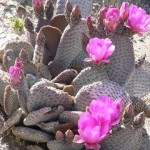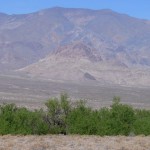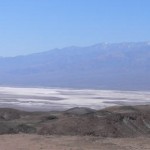Plows, Plagues & Petroleum: A Review
August 31, 2010 Leave a Comment
William Ruddiman , one of the early paleoclimatologists —a climate scientist who studies climate in ages past– is the father of the hypothesis that bears his name: that mankind began changing the climate long before the Industrial Revolution started burbling enormous amounts of CO2 into the air. Ruddiman began to suspect it was far earlier when he noticed a strange, and strong, anomaly in the regular cycle of methane increase and decrease he had been reading from the geological records during his academic career.
From extensive sampling and analysis of trace elements in the geologic record it was clear that methane in the atmosphere rose and fell in regular cycles, similar to the cyclical increase and decrease in ice coverage of the earth as first deduced by Milutin Milankovich, a Serbian mathematician, while held in prisoner of war camps in WW I.
The amount of heat the earth receives from the sun, as everybody knows, changes with the seasons. As the earth makes its way around its elliptical orbit, the axis of tilt stays the same, in our era a tilt of 23.5 degrees. When, moving around the sun, the axis is tilted towards the sun — more heat in that hemisphere; when it is tilted away — less heat. Herein begins the interesting observations.
1) The axis stays “the same” during any particular orbit. But in fact it doesn’t. It varies over a cycle of 41,000 years. The most extreme is 24.5 degrees, the least is 22.2. We are, in our current years at 23.5. At the greatest tilt more heat would be absorbed in the summer, than now, and less heat in the winters.
2) The axis also “wobbles” or precesses. Like a top the axis slowly moves in a small circle even as it spins. Thus Polaris is our North Star now. When the pyramids were being built it was Alpha Draconis, or Thuban to the Egyptians. The complete cycle -from Polaris to Polaris- is 22,000 years. The wobble of course changes the angle of the axis and thus the amount of earth surface area receiving heat in the summer.
3) The elliptical orbit of the earth also changes. The eccentricity, as it is called, becomes almost zero — that is, a perfect circle — in a cycle of 100,000 years. Needless to say, when the eccentricity is low more heat will be received on earth than at the ends of more elliptical orbits.
These three effects on the earth’s heat absorption have been dubbed the Milankovich Cycles. The driving question for him was the growth and retreat of ice-sheets, mostly in the north but also the south. He postulated that these cycles of orbital and axial change matched very well with many different periods of glaciation in the earth’s history.
In 1981 a meterologist named John Kutzbach had the break-through idea that the same orbital changes were connected to monsoonal cycles as well. Though we think of monsoons as almost a strictly south Asian phenomena, there have been repeated times in earth’s history when the southern Sahara and the Sahel, much further to the west have been grassy plains with large lakes and rivers, unlike the deserts they are today. Kutzbach postulated that the monsoon belt increased, and dropped further south, as solar heating increased. As heating decreased, due to the Milankovich cycles, the monsoons left Africa, and left it high and dry. When large areas grow seasonal vegetation, methane is released into the atmosphere as the vegetable matter decays. As it turns out, the methane rise and fall track the wetting and drying of Africa pretty precisely. More heat –> More Monsoons –> More Methane. The cycle from dry to wet and back to dry is about 22,000 years.
Ruddiman, conversant with all this, and having been a student of Kurtzbach, began to wonder late in his career, why the methane measurements from about 5,000 years ago started going up instead of continuing to fall as would be expected — the earth continuing into the cooler part of its cycle? The conclusion he came to, and called the Ruddiman Theory, is that as Homo Sapiens spread across the earth following the last great ice age they not only began felling trees and doing slash and burn agriculture, releasing CO2 into the atmosphere while decreasing the size of the CO2 sinks, but especially in SE Asia they began flood irrigating and planting large stands of rice. The seasonal post harvest remains, as they rotted, released great new amounts of methane into the air, reversing what would have been a downward trend of methane in the atmosphere, and as a result, helping to create the odd 8,000 year span of moderate human-scale climate we’ve enjoyed since about the beginning of the agricultural era. Had it not been for this CO2 and methane forcing, the earth would likely be in another deep glacial age by now.
 The book Plows, Plagues and Petroleum is Ruddimen’s 2005 attempt to bring together the various papers he had published, and strands of thought pursued in working out his theory.
The book Plows, Plagues and Petroleum is Ruddimen’s 2005 attempt to bring together the various papers he had published, and strands of thought pursued in working out his theory.
It is not an uncontested theory, as he readily admits. Others think there are simpler explanations than his for the evidence he cites. He acknowledges their doubts and tells us why he thinks his ideas hold up. For a very clear set of examples of how scientific argument works, always hewing to and interpreting real, mutually confirmed data, you couldn’t do better than to read Chapter 11, “Challenges and Responses.” The competition between scientists is so sharp one wonders how a current popular (anti-science) meme ever took hold in certain circles — that scientists are captives of a herd-like mindset, unable to resist popular ideas or peer pressure.
A second hypothesis follows the first. What, in the human record, might account for several dips in the CO2 record during its general upward trend? Plagues? Have there been severe enough decreases in human populations in the past 2500 years to result in less forest clearing, less slash and burn, less rice farming? His research led him to say: the major CO2 dips in the ice-core records correlate more persuasively with population drops caused by major pandemics than do with times of war or famine.”
Petroleum, the third of his title nouns, needs no review here. We are mostly familiar with what petroleum and coal have wrought. Nevertheless, it is interesting to read it again through a careful scientist’s eyes.
In closing, Ruddiman tells us he has not had a dog in the current climate change fight until recently. His expertise has been in climate change in past millennium. He has had no funding from industry or environmental sources, nor real interest in the highly politicized climate change assertions and counter assertions. He does however –he says in an Epilogue– have an opinion. The discussion, he thinks, has been wrenched at both ends by alarmist predictions — to the detriment of science. Further, while he has no doubt that climate change is happening, he does not think it is the greatest threat to the survival of mankind. The shorter term issues of water and soil and fossil fuel depletion are likely to be much bigger problems, sooner.
Plows, Plagues and Plowshares isn’t a book everyone will appreciate or find their time well repaid. For those who the current political and rhetorical attitudes have shaken up, and have an interest in the real science underlying the serious claims, this is a good, short, if academic book [Princeton University Press] to absorb, and let add to other sectors of your knowledge.
Available at Princeton Press or your local library!






Recent Comments